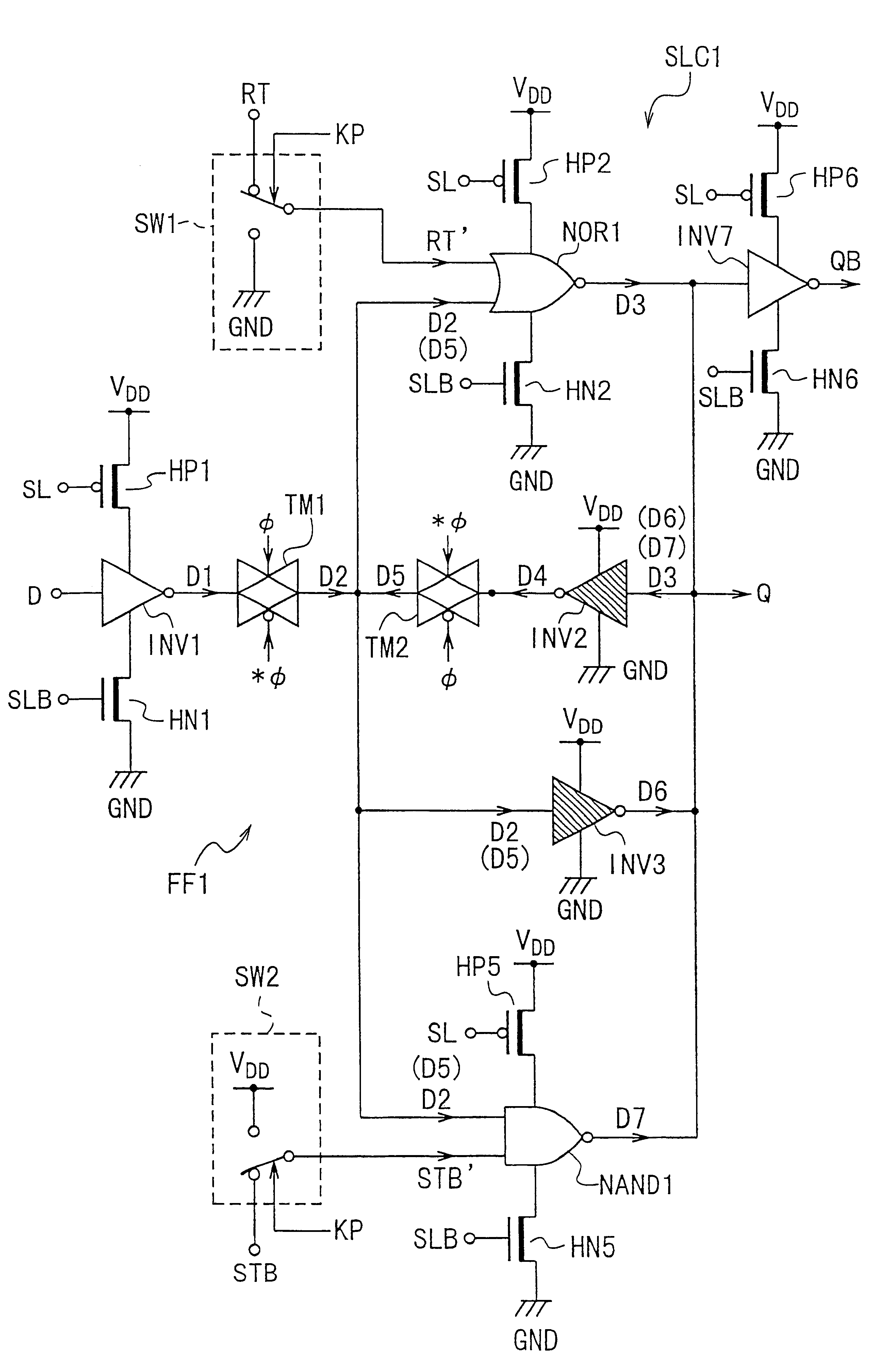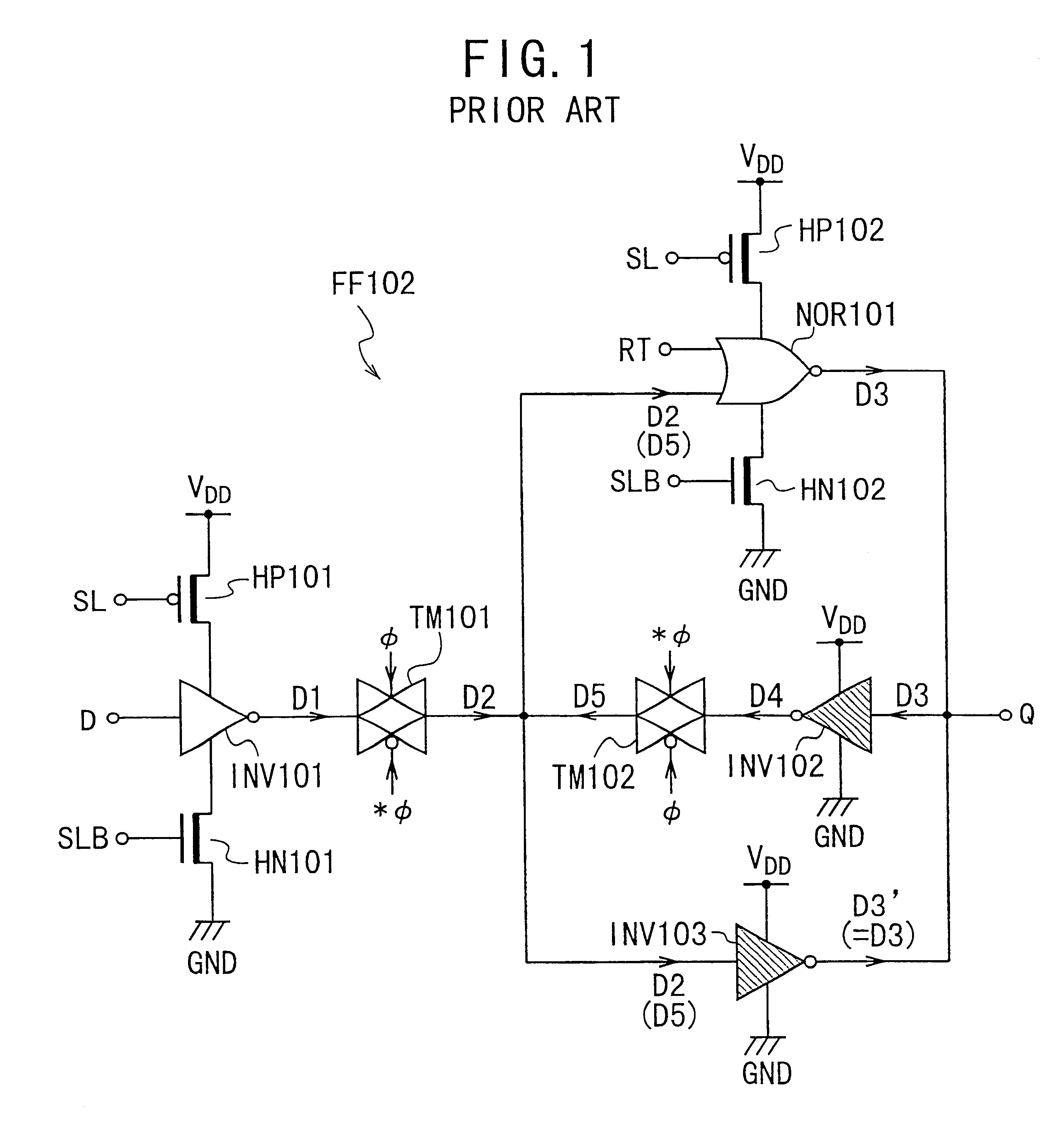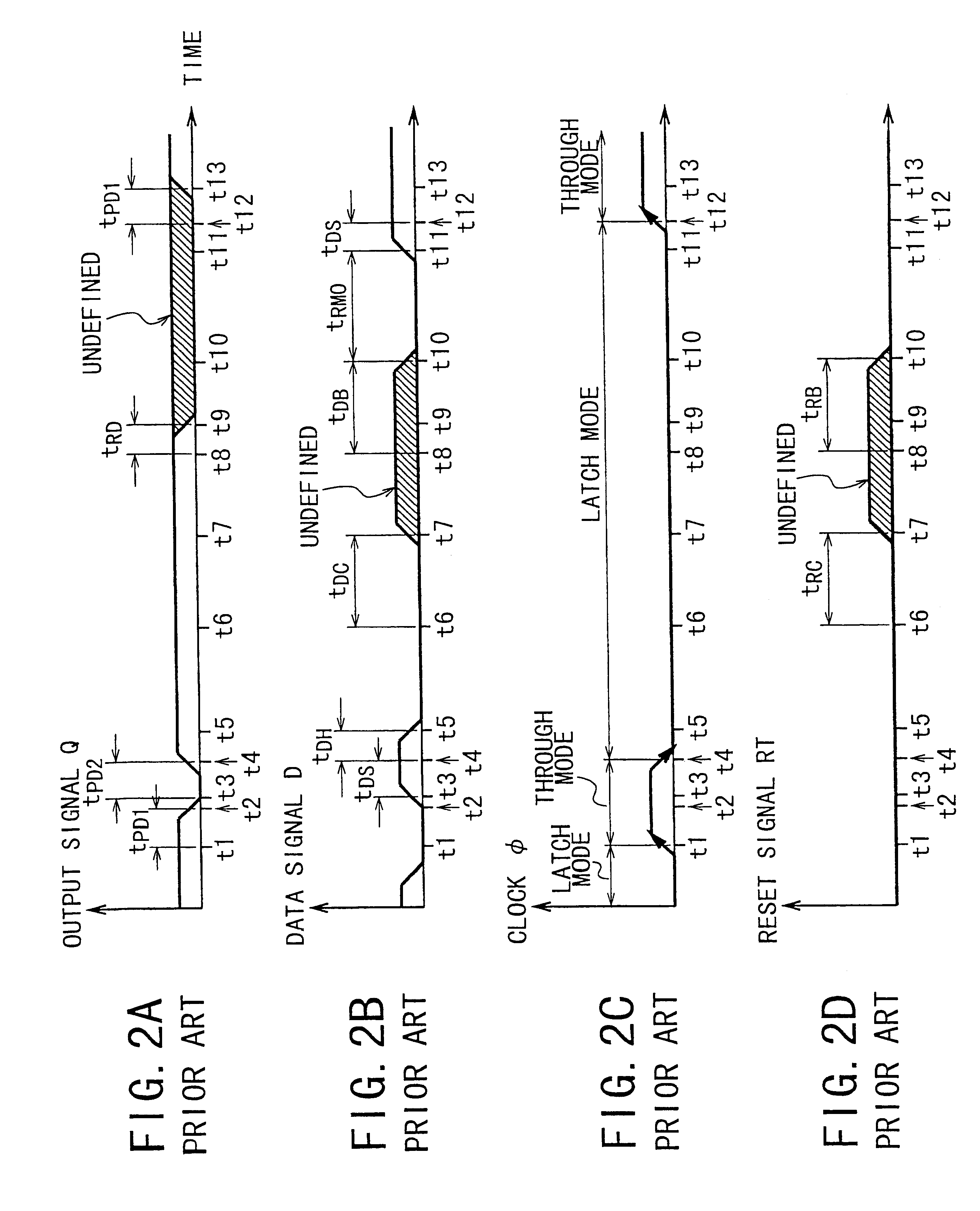Sequential logic circuit with active and sleep modes
a logic circuit and sleep mode technology, applied in the field of sequential logic circuits, can solve the problems of low decrease the power consumption in sleep mode, and reduce the power consumption of inverters inv102 and inv103
- Summary
- Abstract
- Description
- Claims
- Application Information
AI Technical Summary
Problems solved by technology
Method used
Image
Examples
third embodiment
FIG. 8 shows the circuit configuration of a sequential logic circuit SLC3 having sleep and active modes according to a third embodiment of the present invention. The circuit SLC3 has the same configuration as that of the circuit SLC2 according to the second embodiment of FIG. 7, except for the configuration of the first and second switches SW1 and SW2. Thus, only the explanation about the switches SW1 and SW2 is given below.
The first switch SW1 is comprised of a transmission gate TM23 and a control transistor HD21. The transmission gate TM23 is formed by high-threshold MOSFETs. The transmission gate TM23 serves to pass or block the reset signal RT in response to the data keep signal KP and the inverted data keep signal KPB. The transmission gate TM23 blocks the reset signal RT in the data keep mode (i.e., KP=1 and KPB=0), and passes the reset signal RT in the normal mode (i.e., KP=0 and KPB=1).
In the data keep mode, since the pull-down control transistor HD21 is on, the output signa...
fourth embodiment
FIG. 9 shows the circuit configuration of a sequential logic circuit SLC4 having sleep and active modes according to a fourth embodiment of the present invention. The circuit SLC4 has the same configuration as that of the circuit SLC3 according to the third embodiment of FIG. 8, except that the configuration of the first and second switches SW1 and SW2 are illustrated in detail. Thus, only the explanation about the switches SW1 and SW2 is given below.
The transmission gate TM23 is comprised of a high-threshold p-channel MOSFET HP31 and a high-threshold n-channel MOSFET HN31. The source and drain of the n-channel MOSFET HN31 are connected to drain and source of the p-channel MOSFET HP31, respectively, forming a pair of bidirectional terminals. One of the bidirectional terminals, which forms an input terminal of the switch SW1, is applied with the reset signal RT. The other of the bidirectional terminals, which forms an output terminal of the switch SW1, is connected to the reset termi...
fifth embodiment
FIG. 10 shows the circuit configuration of a sequential logic circuit SLC5 having sleep and active modes according to a fifth embodiment of the present invention. The circuit SLC5 has the same configuration as that of the circuit SLC3 according to the third embodiment of FIG. 8, except that the configuration of the first and second switches SW1 and SW2 are illustrated in detail. The circuit SLC5 is a variation of the circuit SLC3. Thus, only the explanation about the switches SW1 and SW2 is given below.
The transmission gate TM23 is comprised of a high-threshold p-channel MOSFET HP41. The source and drain of the p-channel MOSFET HP41 form a pair of bidirectional terminals. One of the bidirectional terminals, which forms an input terminal of the switch SW1, is applied with the reset signal RT. The other of the bidirectional terminals, which forms an output terminal of the switch SW1, is connected to the reset terminal R of the latch circuit FF1. The gate of the p-channel MOSFET HP41 i...
PUM
 Login to View More
Login to View More Abstract
Description
Claims
Application Information
 Login to View More
Login to View More - R&D
- Intellectual Property
- Life Sciences
- Materials
- Tech Scout
- Unparalleled Data Quality
- Higher Quality Content
- 60% Fewer Hallucinations
Browse by: Latest US Patents, China's latest patents, Technical Efficacy Thesaurus, Application Domain, Technology Topic, Popular Technical Reports.
© 2025 PatSnap. All rights reserved.Legal|Privacy policy|Modern Slavery Act Transparency Statement|Sitemap|About US| Contact US: help@patsnap.com



